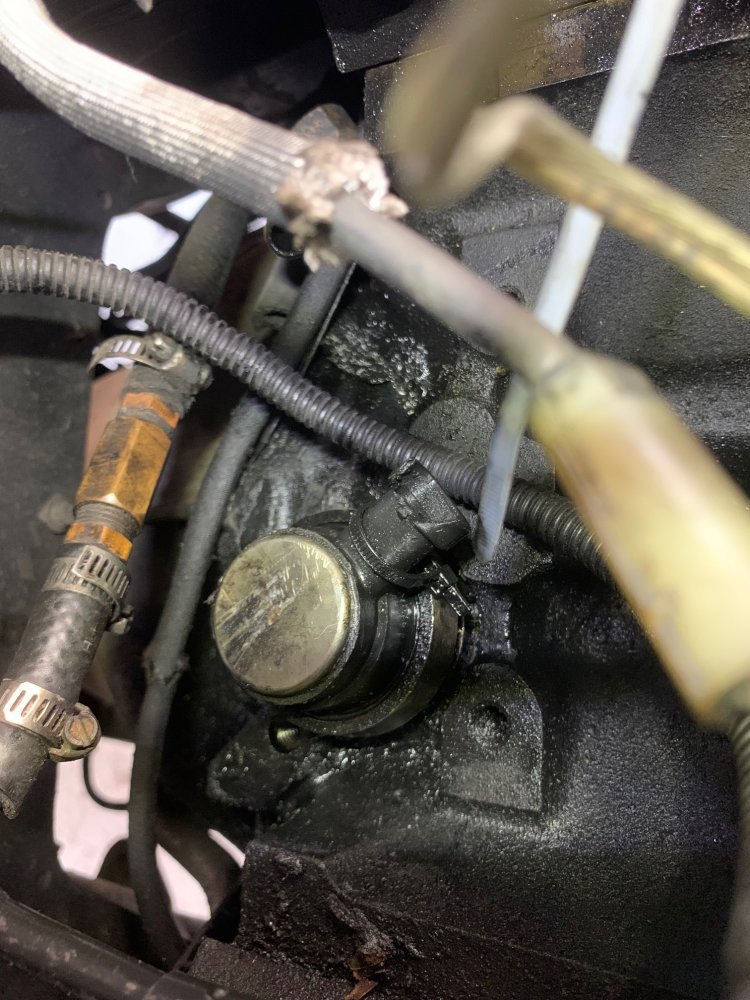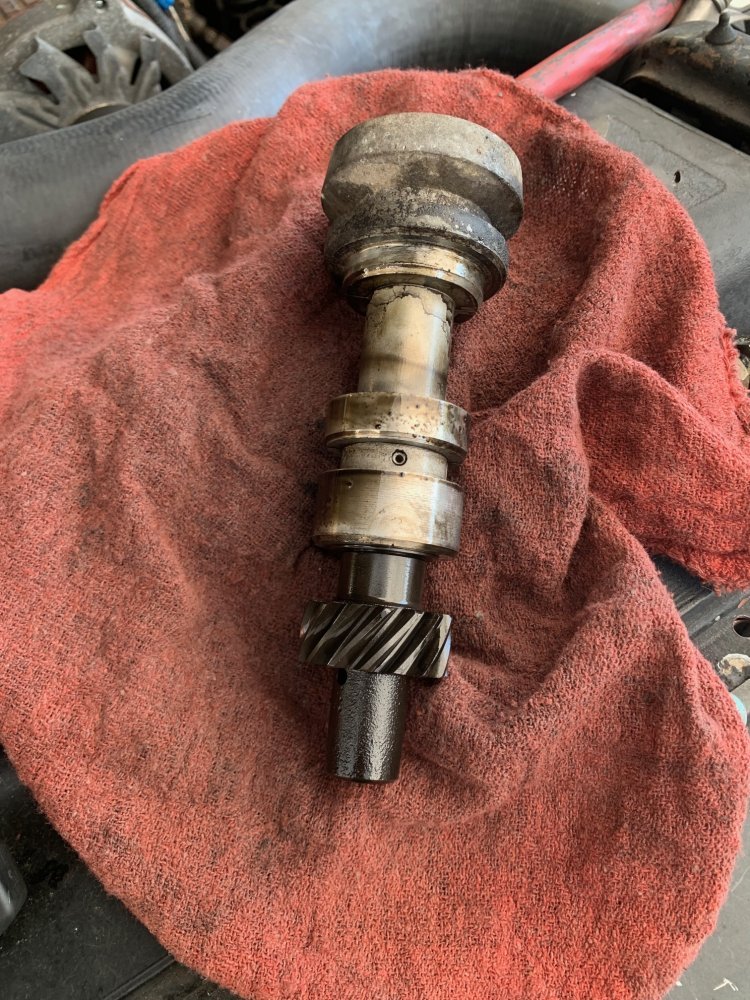Will L.
Well-Known Member
Yes the advance works by limiting the outgoing fuel- which raises pressure inside. The increased pressure forces the advance.
Follow along with the video below to see how to install our site as a web app on your home screen.
Note: This feature may not be available in some browsers.
The issue with the advance piston bore was Stanadyne never sleeved it from the factory until recently. So all the pumps on our trucks would wear out the bore from the steel advance piston riding on the aluminum housing. The fix used to be to bore them out and put in an oversized advance piston, once you reached the max bore size then they could be sleeved with a metal insert and the advance piston is machined down to match. It also doesn't help that the bore for the advance piston is at the bottom of the pump so it collects a lot of junk.@ak diesel driver I believe you are talking about this part of the IP in this video. time starts at 1:32 and continues till 6:58. I do know the little plunger behind the advance lever does not return when the engine is off if pushed in. I discovered this when I adjusted the piece on the throttle shaft. I had adjusted it since it was not contacting the lever until about 1/2 throttle a while back. I had compared it to the IP on the 6.2 engine and set it accordingly. this adjustment made a major difference on how the engine is much quieter under acceleration.
I'm not sure I want to attempt to pull the IP and mess with this in the way this guy did. I wonder if it did have water in the IP if over time that water would evaporate out with heat and running where I could possibly fill the filter with ATF or some other oil that would help clean it, work that plunger pin and lever without pulling the IP and then let the engine run flushing the ATF out with fuel.
Maybe @Will L. or @Rockabillyrat can help with their vast knowledge on this and the symptoms I witnessed this morning as well.
@Rockabillyrat How safe is it for me to pull the pump and open up the large nuts to pull this piston for checking and cleaning any debris without changing any adjustments or causing damage to the pump?The issue with the advance piston bore was Stanadyne never sleeved it from the factory until recently. So all the pumps on our trucks would wear out the bore from the steel advance piston riding on the aluminum housing. The fix used to be to bore them out and put in an oversized advance piston, once you reached the max bore size then they could be sleeved with a metal insert and the advance piston is machined down to match. It also doesn't help that the bore for the advance piston is at the bottom of the pump so it collects a lot of junk.
I preferer to sleeve all the pump housing and be done with it. its a better fix and it saves my from buying all the reamers which are expensive,
The actuator merely locks the front axle. It is a plastic jack screw that pushes out and locks the axle. The shift positions are at the transfer case. The shift or encoder motor is what moves and shifts the transfer case into 4 hi and 4 Lo. The encoder motor does rely on a signal from the actuator that the front axle is locked into 4wd.Are you able to pull the actuator motor out having it in hand while switching between 4hi and 4lo seeing if it moves into place? I assume it's an arm on the actuator that pushes a plunger within the axle to lock it into the different positions? maybe that plunger is sticking?
My mechanic had it narrowed down to actuator, then a faulty wire. Actuator solved 3 of 4. We’ll work on the rest. Important part is the actuator plays a binary function: Locked axle or not locked. The transfer case shifting is back at the transfer case.I would assume the encoder is getting the needed signal since it's locking in 4hi. maybe the encoder is having issue physically shifting the transfer case into 4lo. this would be my thinking at least. iirc I thing a while back you already replaced the encoder.
There is no suction on any of the hoses or pipes. Merely free flowing fluid back to the pump reservoir. AFAIK.OK replacement power steering pump arrived. Got it installed before a 1.5 hour quarterly staff meeting. Tested it after the meeting and knew immediately that it was working. Did some bleeding with it up on stands, engine off and engine on. Pulled reservoir cap and the fluid looks fizzy like soda pop. Took the truck off the stands and started it, have power steering but the same sounds as with my original 241.5K mile pump. Hmmmm.
I drove the truck 12 miles one way to Napa to return the pump pulley remove and install kit. Groaning sound when hitting the brakes and while turning. Sound continued all the way back home for a total of 25 miles. Pulled the cap on the reservoir and the fluid was half way down and fizzy. Topped it up and went for another short drive. Sound is now 98% gone and steering is normal. I am wondering whether it is possible to have an air leak at the hydroboost which causes the fizzed air in the fluid, which then causes the noise.
Tried the bypass kit and it had no effect on the bad pump.There is no suction on any of the hoses or pipes. Merely free flowing fluid back to the pump reservoir. AFAIK.
Did You use that bypass kit to eliminate that variable orfice valve thing on the PS pump ?
Here’s how things look after just installing it.Thank goodness for the top post on the battery.Theres no side posts on these.Today I picked up a Napa gold 6441 air filter to go along with a couple red silicone elbows I got from Amazon.I’m still using the K47 in my 96 gmc truck.I picked up a plastic 5/8 barb fitting from Napa and used a hollow punch to create the hole I needed in the silicone elbow.I think it looks pretty good overall.I’ll install this setup and take another picture under the hood when the rain stops.Its pouring here today.
I used the silicone elbows as the factory K47 air duct elbow is somewhat restrictive and narrow so I wanted to open up that area by going this route.I also used one 4” aluminum adapter to connect both elbows and another adapter was used going into the filter.
Its safe to pull apart. Just mark the position of the LLA cam before you remove it. And of course be very clean with everything.@Rockabillyrat How safe is it for me to pull the pump and open up the large nuts to pull this piston for checking and cleaning any debris without changing any adjustments or causing damage to the pump?
would the symptoms I am experiencing also have anything to do with the advance solenoid or return fitting in the top cover?

